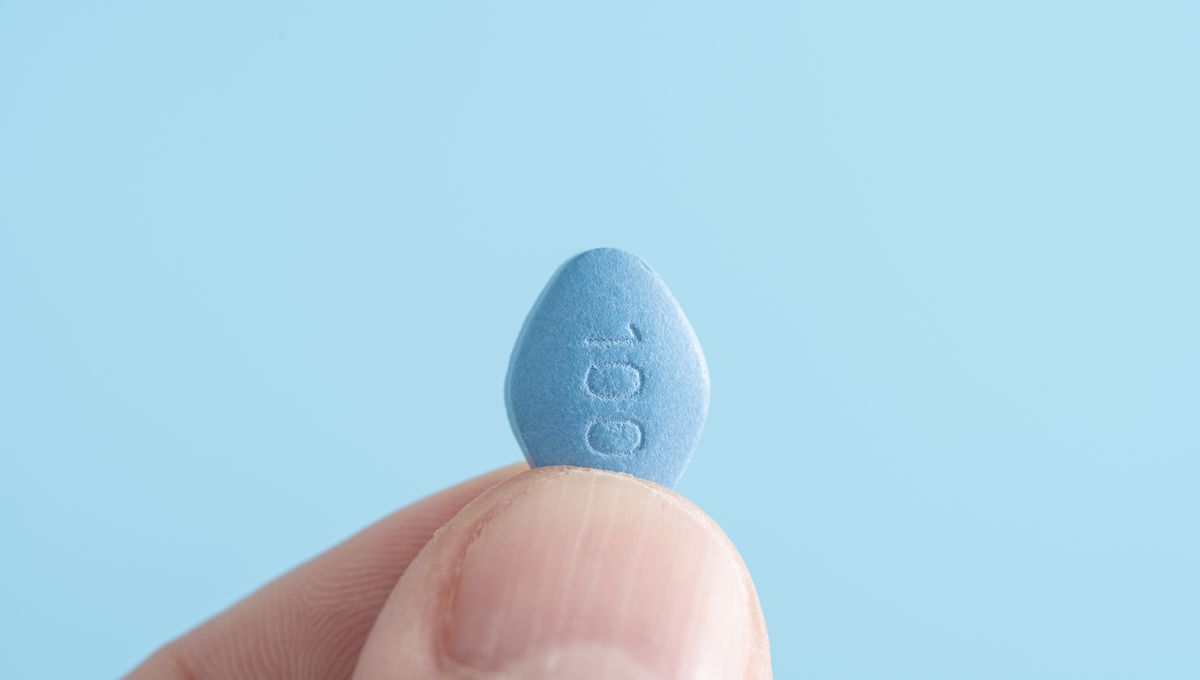
Viagra – or if we’re going to be fancy scientific about it, sildenafil – is perhaps one of the best-known drugs in the world. Plenty will know what it treats, but what about how it works?
From angina to erectile dysfunction
The first clues appeared when Viagra was initially in clinical trials as a treatment for angina, a condition where chest pain is caused by blood flow to the heart being restricted. It was hoped that Viagra could help to relax the smooth muscle in artery walls, widening up the vessels and increasing the blood supply.
Unfortunately, it didn’t seem to have much of an impact when it came to angina. There was another unexpected side effect though – several male participants reported that whilst taking the drug, they experienced more erections.
By 1998, Viagra had been approved by the FDA as a treatment for erectile dysfunction. But how did it lead to these surprise boners?
The science of getting hard
An important first step is for the person taking Viagra to actually be aroused. That’s because it works to interrupt a process that only occurs specifically within the penis when the person attached to it is turned on.
When someone with a penis is aroused, it triggers a nerve signaling cascade that leads to the release of nitric oxide from nerves in the corpora cavernosa, the spongy erectile tissue in the penis. Here, the nitric oxide activates an enzyme that catalyzes the production of a molecule called cGMP.
This in turn leads to the relaxation of the smooth muscle forming the walls of arteries within the corpora cavernosa. When these arteries relax and dilate, blood flows into the penis, causing it to inflate and abracadabra – you’ve got an erection.
It doesn’t last forever though, as another penis-specific enzyme called PDE5 arrives to break cGMP down, reducing the relaxation of the smooth muscle, restricting blood flow, and bringing the erection to a deflating close. It’s this part of the process that Viagra targets.
“The physiology of erection is like driving a car,” explained Dr Arthur Burnett, a urology professor who’s studied the science of erectile dysfunction extensively, in a statement. “You can’t just turn the key and expect to go anywhere. You also need to hit and hold the accelerator.”
Viagra helps to keep the foot on the gas because it’s a PDE5 inhibitor – in other words, it acts to stop PDE5 from breaking down cGMP. That means that, as long as the Viagra user continues to be aroused, cGMP continues to build up, the arteries become fully dilated, and an erection is sustained.
At least, that’s how it should work in theory – and for many people, it works in practice too. However, erectile dysfunction can be caused by multiple different things, which means that Viagra won’t necessarily work for everybody.
Thankfully, scientists are exploring a multitude of other avenues for treatment, from a breakthrough over-the-counter gel that was approved last year, to the potential of diet-based remedies.
All “explainer” articles are confirmed by fact checkers to be correct at time of publishing. Text, images, and links may be edited, removed, or added to at a later date to keep information current.
The content of this article is not intended to be a substitute for professional medical advice, diagnosis, or treatment. Always seek the advice of qualified health providers with questions you may have regarding medical conditions.
Source Link: How Does Viagra Actually Work?